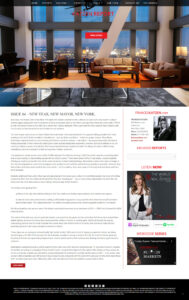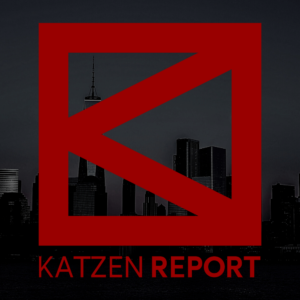New Year, new mayor. And in true New York spirit, Eric Adams wasted no time. Almost as soon as he was sworn in, Mayor Adams began urging New York businesses to bring employees back to the office, starting with a three-day work week. “COVID is here. We have to learn to live with it in a smart way,” Adams declared. This is just what the city needs to fully relaunch, and I’m focused on how the initiative will translate to our markets.
The new mayor seems to be a friend of New York real estate. One early indication? He opposed hiking penalties for those residing in the A.I.R. Districts (Artist in Residence) – such as NoHo and SoHo – without a proper license. Since those downtown neighborhoods are now teeming with finance and tech workers – not artists – the proposed penalty hike risked hitting thousands of New Yorkers by raising their taxes and devaluing their properties. Whether you’re pro-Adams or not, he seems to radiate a sense of resiliency. Who knows how this historic period will end? One thing I do know is that I sense something I have not noticed in a while among New Yorkers: optimism.
The question is, where are we now on this COVID odyssey? One March morning in 2020 the world came to a screeching halt and a mass exodus of city-dwelling people left our cities in panic. There were violent shifts in real estate. I recall landlords offering as much as 6 months free rent to avoid vacancies in their rental buildings. Meanwhile, owners who were no longer in the city and desperate to cover their mortgage costs wanted to rent out their apartments as quickly as possible. However, they had no idea what they were worth in this new market – all of a sudden, there was a glut of inventory and incentives and not a lot of demand.
Markets rallied and then sank. What was emerging beneath the noise was a cohort of committed people who were still willing to invest in New York real estate and trusted that this, too, “would pass” – (as so many other catastrophes to befall the city have) and they were dead serious about taking full advantage of the situation.
Two things were guiding them:
a) Those in the city who had been living in their four walls were feeling claustrophobic and wanted more space.
b) Interest rates were phenomenal, making it affordable to upgrade to city properties that otherwise would have been beyond their reach. This “additional room” for almost the same price as their current payment made it a “no brainer”.
Put those together, and we saw one of the fastest real estate recoveries since the boom of 2014 – 2015 that followed the 2008 financial crisis.
The arrival of the Omicron variant spooked markets and upset the city again, but the realization that it was less virulent than earlier strains, and now it’s retreat have reassured New Yorkers. The city is coming back. California has led the way by announcing plans to end its mask mandate this month, New York State is fast on its heels, with Governor Kathy Hochul predicting an end to the mask mandate sometime in March.
These days, we are seeing an extraordinarily tight rental market. With such a lack of supply, prospective renters are being forced to pay a full 15% of the annual rent fee to brokers in order to secure a rental in the city. So much for those generous incentives! Rentals are again being snapped up in record speed (some within an hour) and bidding wars have again become common.
Manhattan’s available inventory, which neared 10,000 units soon after the city’s reopening last TK, has been halved in a matter of months, according to a Douglas Elliman market report. I expect these figures to rise again in the Spring, as they usually do. As far as January numbers go, demand is strengthening and I’m looking for a similar market pace to 2021 – to an extent. One caveat is that properties are still taking 90 days longer to sell, compared with the same time last year. On the other hand, those 2021 numbers may have been inflated by older units that bled over from the market’s unusual stall in 2020.
I’m not worried. Having a listing that is accurately priced should bring these average marketing times down, and that seems to be what’s happening. So far, 72% of units sold this quarter did NOT need price adjustments. They sold in an average of 79 days, compared to the 182-day average for listings that did need adjustments. It is safe to say we’re already seeing a decline in marketing times in 2022. If you combine that with an already-tight market, I’d speculate that once clients find a good fit, there’s less flexibility to “shop around”.
When it comes to the actual list prices, we’re currently in a “middle” ground. Even though we recovered from the mass exodus of 2020, when I compare the overall industry highs from 2015 through 2016, it’s clear we’re still in a recovery. Still, when I look at individual transactions, I see highs that surpass previous peaks. There were at least eight listings that broke $50M in the city so far this year – to me, it feels like the market is on the rise, especially for luxury.
Like everyone else, I’m now watching interest rates like a Central Park hawk. For those in the market today, a 30-year fixed mortgage that was in the low 3’s pre-pandemic would now be in the mid 3’s. To put that into perspective, at the peak of the pandemic, I saw rates in the high 2’s. With rates now rising, I expect buyers to respond by entering the current market to avoid a potential spike later down the road.
So, to recap: two years ago panicked people were fleeing the city and apartments sat empty. Today, good luck getting your hands on your dream home without a savvy broker. That is New York real estate for you. It is alive and well, and I’m looking forward to seeing what it does next!

